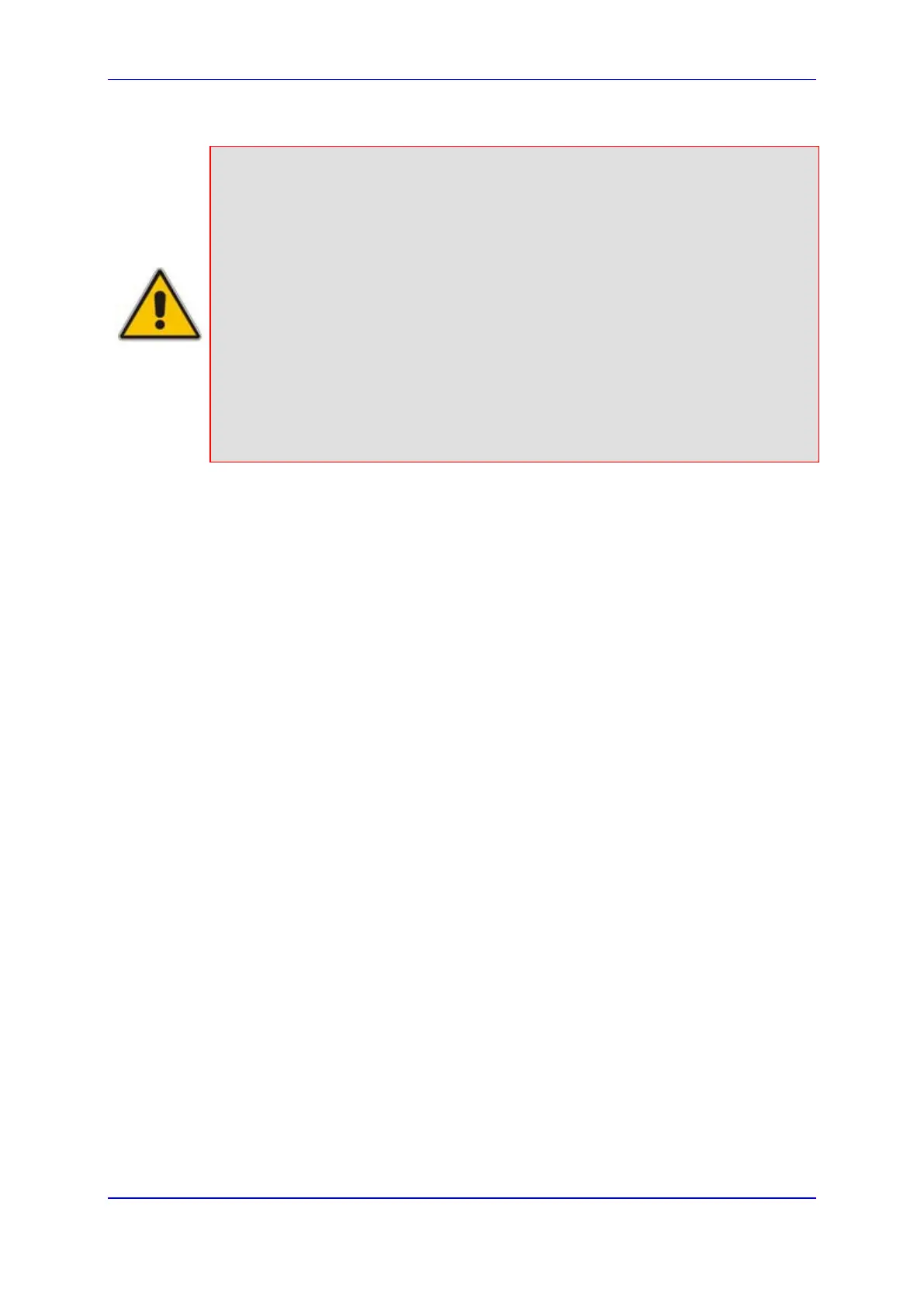Version 6.4 269 March 2012
SIP User's Manual 18. GW and IP to IP
Notes:
• Each message can be manipulated twice - once for the source leg
manipulation rules and once in the destination leg (source and
destination IP Groups).
• Unknown SIP parts can only be added or removed.
• SIP manipulations do not allow you to remove or add mandatory SIP
headers. They can only be modified and only on requests that initiate
new dialogs. Mandatory SIP headers include To, From, Via, CSeq, Call-
Id, and Max-Forwards.
• Manipulation of SDP body is currently not supported.
• For the IP-to-IP application, the outgoing message is re-created and
thus, SIP headers not relevant to the outgoing SIP session (e.g.,
Referred-By) are not included in the outgoing message. Therefore, if
required, manipulations on such headers should be handled in inbound
manipulation.
18.3.10 Manipulating Number Prefix
The device supports a notation for adding a prefix where part of the prefix is first extracted
from a user-defined location in the original destination or source number. This notation is
entered in the 'Prefix to Add' field in the Number Manipulation tables (see 'Manipulation' on
page 256):
x[n,l]y...
where,
x = any number of characters/digits to add at the beginning of the number (i.e. first
digits in the prefix).
[n,l] = defines the location in the original destination or source number where the digits
y are added:
• n = location (number of digits counted from the left of the number) of a specific
string in the original destination or source number.
• l = number of digits that this string includes.
y = prefix to add at the specified location.
For example, assume that you want to manipulate an incoming IP call with destination
number +5492028888888 (area code 202 and phone number 8888888) to the number
0202158888888. To perform such a manipulation, the following configuration is required in
the Number Manipulation table:
1. The following notation is used in the 'Prefix to Add' field:
0[5,3]15
where,
• 0 is the number to add at the beginning of the original destination number.
• [5,3] denotes a string that is located after (and including) the fifth character (i.e.,
the first '2' in the example) of the original destination number, and its length being
three digits (i.e., the area code 202, in the example).
• 15 is the number to add immediately after the string denoted by [5,3] - in other
words, 15 is added after (i.e. to the right of) the digits 202.

